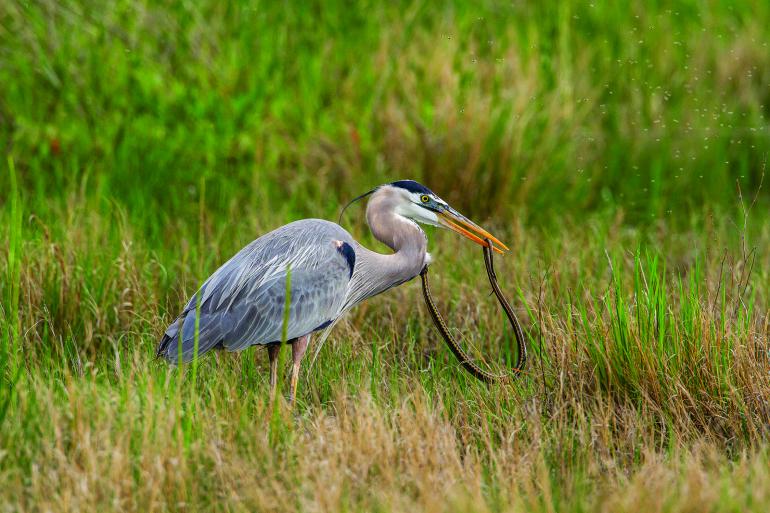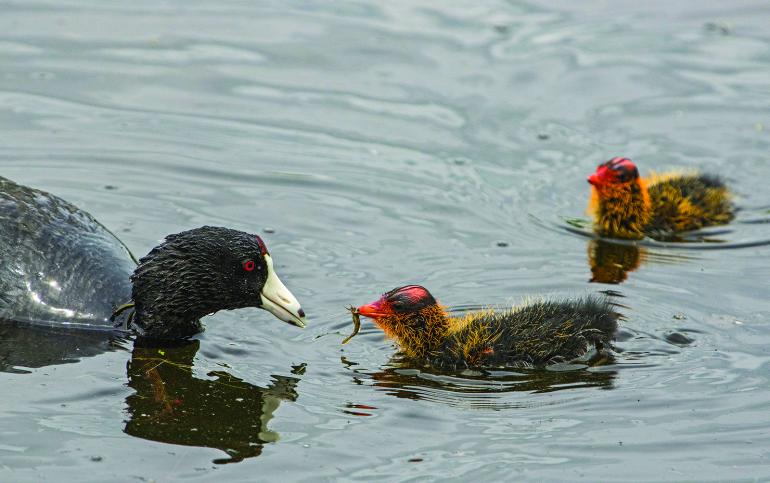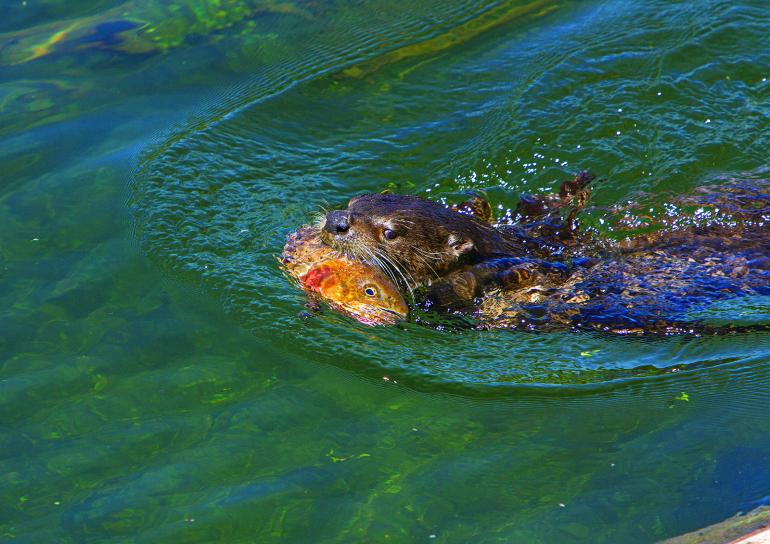What's for Lunch
Capturing the hunt on camera.
What does it take for a predator to catch its prey? Is it an acute sense of smell, sight, or hearing with which he can detect the subtle underground movements of rodents? Or is it his stealth? Or his speed and pouncing abilities? Here in Greater Yellowstone, we’re fortunate to have predators that use all of the above tactics—and more.
One of the most unusual predator-prey scenes I’ve encountered was a great blue heron catching a garter snake. The catch was easy. Eating it... not so much. At first, the heron clamped onto the snake’s tail and swallowed—but the wrong end first. The snake wisely latched onto the heron’s breast feathers and refused to be gulped. The heron regurgitated the body, dropping it to the ground. Faster than I could blink, and with absolute precision from the heron’s sword-like beak, the bird caught the slithering reptile by the throat. This time, the snake had no recovery. The heron swallowed it, head-first.
Until this episode, I’d thought the heron was only a fish-eater. Soon after, I discovered that another delicacy for the big bird is a plump mouse. Likewise, most other canines or raptors that spend much time on the prairie enjoy meals of mice, worms, and ground squirrels. I’ve watched sandhill-crane parents of both sexes delicately pluck worms and mice from the ground to feed their little colts. It’s quite an undertaking for the bird to maneuver a juicy worm with her large beak so the chick can grab the dangling invertebrate.
Another avian species that’s fun to watch is the American coot. It looks like a throwback to the era of dinosaurs, with colorful and oddly-shaped feet that are made for running across the water. Even more colorful are the young, spiky-haired chicks who are ravenous for protein. Coloration makes all the difference as to who gets fed first. The more colorful coot chicks in the brood receive the most prized and scrumptious food.
But don’t forget about four-legged mammals. River otters enjoy a smorgasbord of fish, crayfish, and turtles. The otters may have cute faces, but when teeth are bared their ferocity is undeniable. Conversely, bears might look ferocious, but they actually possess “loose lips,” which are prehensile for grasping small, delicate berries.
Whether for a carnivore with canines or a raptor with talons, acquiring a meal is no mean feat. But as surely as one must eat to survive, most creatures are also susceptible to being eaten. It results in a delicate dance that is fun and challenging to capture on camera for those in the right place at the right time.
















